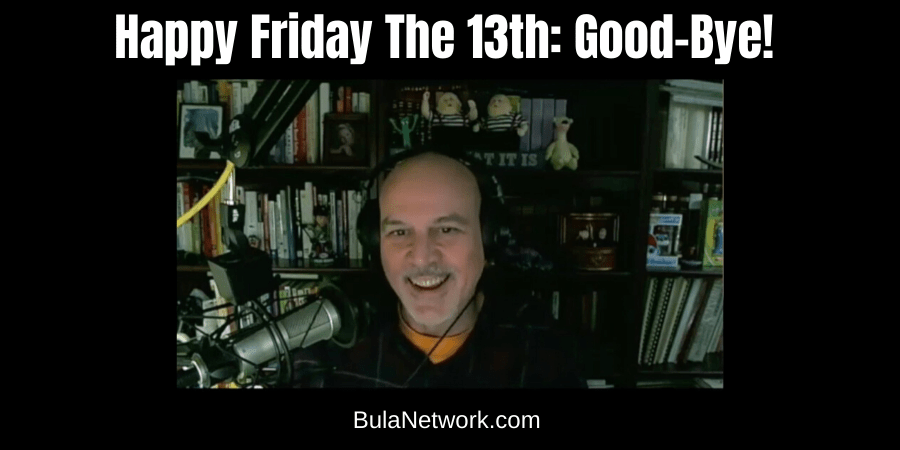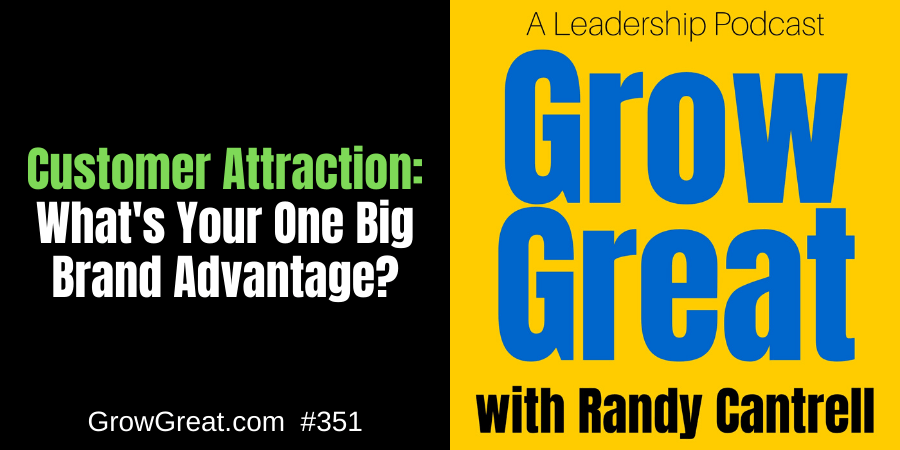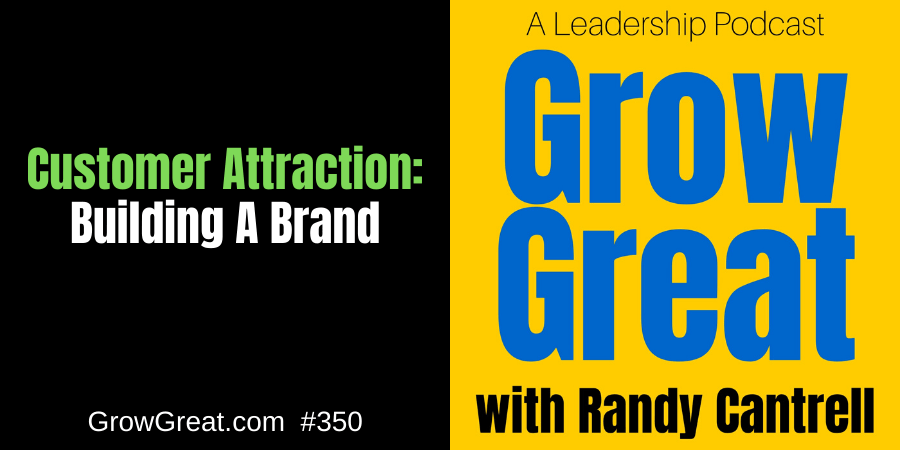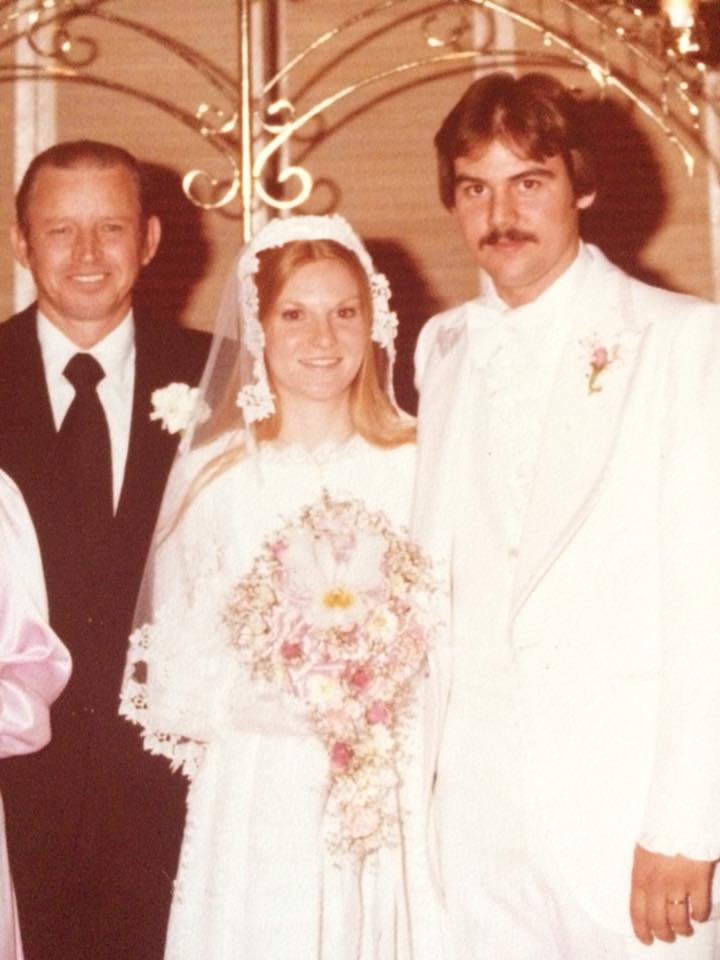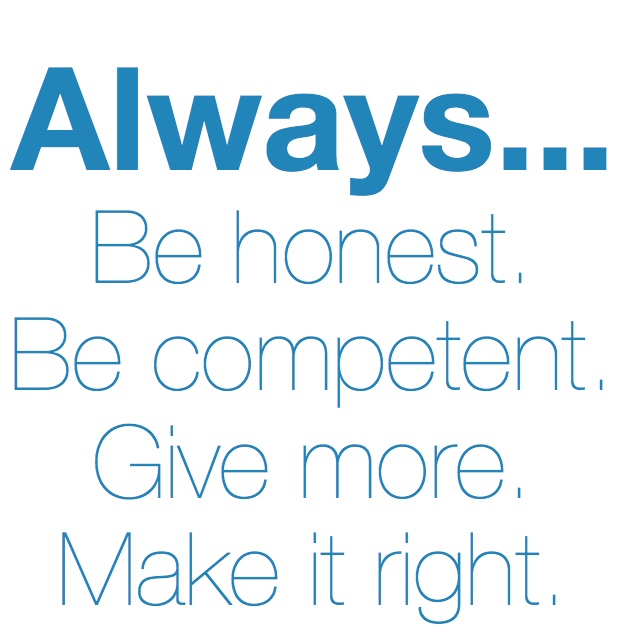Happy Friday The 13th: Good-Bye! (352)
Podcast: Play in new window | Download (Duration: 56:05 — 51.6MB)
Subscribe: Apple Podcasts | Spotify | RSS | More
Cue Tom Petty’s classic hit song from his fabulous Wildflowers’ album, Time To Move On.
Tom’s singing about divorce, but if I were singing the song it’d be about my long-last professional shift. Today, I hope you get some value as I rehearse with you the general angst and execution (or lack) of the past year. As we near the end of it and stare into the face of 2020 it feels right to craft this final chapter of the Grow Great podcast.
I’m hoping you’ll stay along for the ride because my intent on continuing to provide high value – in fact, I’m making this change because I want to up my game in bringing you HIGHER value.
For over 4 decades I’ve been immersed in business. All my activities have been focused on the business of building and growing business. I’ve spent most of that time leading businesses. And I’ve loved almost every mile along the journey. But it’s time to move on.
No, I’m not leaving business behind, but I am changing direction. More accurately, I’m changing my focus and going singular rather than being as broad as I’ve been over the past decade.
When I entered the professional services arena a decade ago it was real roll-up-your-sleeves-get-your-hands-dirty consulting work. I was intent on helping business owners shore up operationally. Quite often it involved retooling sales processes, too. It was the under-the-hood stuff that every business requires.
Over time it morphed. Quite organically. It ended up becoming coaching, which I found suited me unlike anything else. I’m ideally wired for it, as I had discovered when I was in my early 20’s. I enjoy communication, learning, discovery and my natural curiosity drives me to ask questions seeking understanding. In short, it was right up my ally, suited to my strong suit because it was all about PEOPLE. It was about me doing whatever I could to help people figure it out for themselves. I loved it because everything about it felt right.
There’s a character strength assessment that I’m fond of. A buddy – Joe Bacigalupo of AlliancesHub International put me onto it. I knew something of the folks behind it because I had read (years ago) a book entitled, Learned Optimism by Martin Seligman. He’s one of the people behind the VIA Survey, the folks leaning hard into character strengths (which differ from talent or skill strengths).
That assessment is meaningful because among my core character strengths are things I’ve long known about myself. Things like forgiveness are big things for me. And easy.
My passion to go deep with people in an effort to serve them has always been strong. It’s been growing stronger and stronger over the past decade. I’m naturally bent toward being a person with whom others can feel safe. Confidentiality isn’t hard for me. Not judging people or telling them what they “should” do it’s either. I’m happy to give people my opinion if they press, but I mostly am geared to asking questions so they can figure out for themselves what is best for them. This is all in the context of business or organizational behavior. So candor is up near the top of things I cherish most.
What I’ve learned the past 4-5 years is that this is woefully lacking in the world. But not really. Let me explain.
Talk with 10 people and I guarantee if you direct the right questions toward them you’ll discover each of the 10 was powerfully impacted by somebody. Likely a number of somebodies. In other words, they leveraged the power of others. We all do it, but most of us don’t do it strategically or even tactically. It just happens organically. Or not.
I began to look more closely at the people at the bottom of the achievement pile. People who suffer all sorts of challenges that I have never faced. Many of them lacked good influence from others. The child who grows up abused and neglected may lean into poor and foolish behavior. Devoid of having the power of others, that child can develop into an adult lacking the necessary wisdom to navigate life successfully. Yes, there are outliers — those who grow up like that and in spite of the horrific odds, they choose to lean hard into wisdom opting to make the best choices possible so they can escape the dungeon of despair.
It’s not so shocking to me because as a man of Faith I’ve long known what the Bible says about such things.
1 Corinthians 15:33 “Be not deceived: Evil companionships corrupt good morals.”
The converse is equally true. Surround yourself with good people and it can foster higher behavior. In our organizations, it produces higher human performance. Just take a close look at any group or team that is high achieving and you’ll see it. The power of others.
Four years or so ago things took a professional turn for me. I was given an opportunity by a very forward-thinking City Manager looking for an executive coach for one of her Directors. Thrust into an organization whose goal was to deliver superior service to a demanding city population, it was quite different than my typical trifecta of business building stuff: a) getting new customers, b) serving existing customers better and c) not going crazy in the process.
I found two of the three were still in place though. Mostly, I found the focus was solely on PEOPLE. It was a complete focus on PEOPLE. People working well with other people. People struggling to work well with others. People unable to accurately read a situation. People struggling to communicate effectively. People finding it hard to lead. People finding it hard to follow. A lot of culture stuff. A lot of team stuff. Chemistry stuff. Emotional intelligence stuff.
My eyes were opened. This was my niche. Not serving city government, but focusing on PEOPLE. It felt right. Everything about it felt right.
While I’d been an “operator” all my life and I still immensely enjoy strategy and operations…nothing trumps PEOPLE. For me, nothing trumps being able to go deeply enough with people where real help, support, and service can happen. It fueled me, unlike any work I’d ever done.
I pushed a bit harder into the PEOPLE side of things. It wasn’t easy. I was too reluctant – now that I look back – to let go of operational stuff. When you’ve so embraced being an operator for so long it’s a tough thing to shed. But slowly I began to intentionally work on it.
Then there’s the reality of client services. You do what you must to get clients, serve clients and keep clients. It wasn’t always the direction I wanted to go, but I did it anyway. Increasingly my heart wasn’t in it. But a clean pivot didn’t seem possible. Besides, now that I’ve got clarity I didn’t have in real-time.
Along the way, I reached out and made a connection with Leo Bottary. Leo had co-authored a book, The Power Of Peers. We started a podcast, which I produced, The Year Of The Peer. From that podcast, Leo wrote a second book, “What Anyone Can Do.” After that, I joined him as a cohost of our current podcast by the same title.
Associating with Leo was very intentional because I knew he was a smart guy about peer groups and peer advantage. I wanted to learn all I could about peer advisory groups. Why do they work? Why don’t more people take advantage of them? What makes a great peer advisory group? Why do people join them? Why do they leave? I had many questions. I knew I wanted to operate in that space. In fact, three years ago I knew I wanted Bula Network to be a peer advisory company operating virtual or online peer advisory groups. I also knew the first group needed to be SMB owners. Entrepreneurs operating companies doing a few million bucks to companies doing in excess of $200M. I’m an operator and I was driven to build this first group of people who make the decisions, and who are close to the customers and the employees.
It takes time to figure it out. It took me too long. Proof that no matter how smart you are, figuring it out is hard work. 😀
2020 is a fitting year. A fitting number. 2020 provokes most of us to think of VISION.
My vision is clearing. Well, not physically. I need reading glasses, but professionally, even personally, many things are getting clearer. It’s been a long journey, but I rather think things happen in due time. I suppose things happen in a timeline that CAN work to our advantage if we’re wise. I’m trying hard to be wise.
Over the summer I really started trying to build The Peer Advantage by Bula Network. I had figured I could get it up and running by the late fall of this year. It didn’t happen. And it was entirely my fault. I didn’t give it the focused effort it deserved. I had so many irons in the fire because I said YES to too many things and I wasn’t discriminating enough. Learn from my errors.
“If everything is important, then nothing is important.”
That’s my quote. I first said it when I was a teenager as I observed the insanely erratic behavior of a business owner I was working for. He taught me a lot because he was a jerk and not very smart. I learned early on what NOT to do to succeed at business. He was second generation and dad had built a good business. So good that even a moron son couldn’t quite ruin it at the time. 😉
Here I was being my own jerk and being stupid. “Who’s the moron now?” I often thought.
I’d have conversations with people about peer advantage. Most had no idea about it. It was so far beyond the realm of anything they’ve ever experienced that they struggled to see how it could help them. I searched for language to help convey it. I’m good with words. And have never struggled to find ways to connect. But that wasn’t really the challenge.
The challenge was like a hydra – a monster with many heads. I had too many irons in the fire. I wasn’t focused. The Peer Advantage wasn’t’ seen as solving any one problem. Customers want solutions and a generic solution – helping you make better decisions – isn’t nearly precise enough.
Leo is an adjunct professor and he was conducting a master’s level online class for a university. He thought it’d be a good exercise for his class to do a project on The Peer Advantage, this new initiative I was planning to launch. Bright people from all over the globe devoted themselves for 2 weeks to develop a brilliant strategic communication plan to help me. I interacted with the class via a video conference twice. Their work resulted in a brilliantly constructed slide deck and advice that my brand should become The Peer Advantage by Bula Network.
They did great work and I did very little with it. Again, too many distractions. Too many irons still in the fire. Saying YES too many times and not saying NO nearly enough. Nobody to blame but myself. I simply needed to make up my mind. I needed to draw a line in the sand and fully commit. But I was reluctant.
Belief. It Matters.
True confession time. I *strongly* believed in the service. I knew the power of, “Who you surround yourself with matters.” I also knew from experience how tough it is to help other people see the value of peer advantage. I was suffering the symptoms of it myself. Vulnerability. Courage. Those are big issues. They impact belief and belief drives everything. Without belief, there is little confidence and without confidence, there’s never success!
But I did believe in THE POWER OF OTHERS.
I did believe in how dramatically it could positively change the lives of anybody who dare join themselves to THE PEER ADVANTAGE.
I did believe in my ability to have the necessary conversations to find and select the best people. I even believed in my ability to convey the benefits of it to prospective members.
What I didn’t believe in was the sales conversation.
What I didn’t believe in was my ability to make this singular focus work, to the exclusion of everything else. It was scary. Deep down I knew I could, but at a surface and practical level, it was frightening.
Along the way, some personal challenges erupted that changed my life. No, I didn’t get a divorce. I’m still married to the girl I fell in love with when I was 18. In January we’ll hit our 42nd wedding anniversary. But life throws all of us curveballs and we’ve experienced our own. So have you. I’m not claiming mine are special because they aren’t. But you know that personal challenges, especially those that deeply affect us, are impossible to compartmentalize. Our lives are our lives. We’re not just podcasters, or business owners, or leaders. We’re people. And there it is again. PEOPLE.
More and more I was falling in love with what I deemed, “leveraging the power of others.”
Emotionally and mentally that was my focus. I couldn’t get my mind off of it, but I was still distracted with too many other activities. They were robbing me of any opportunities to succeed at what I most wanted to achieve. I was my own worst enemy but didn’t fully realize it.
I was isolating myself. How ironic, right? The guy falling in love more and more with THE POWER OF OTHERS. And he’s not availing himself of the power of others. Not professionally anyway.
During my personal crisis, I was fully leveraging the power of others. Four men served me. Three old men and one younger man. All of them gospel preachers. We all share a common faith. I’ve known each of them for a long time, three of them (the old men) all my life. They helped me in ways that even a wordsmith like me can’t properly express.
One of them, the youngest of the eldest, was 75. He’d been battling health issues, but nobody was expecting a hospital visit end with his sudden death. He was a big figure in my life. A man who loved me enough to challenge me. And it was terrific because I knew he cared deeply about me. Suddenly, I was without him and I’d never been without him.
A week ago the eldest of the eldest died. He was 88 and had been fighting his own health challenges, but none of us expected him to go to bed and not wake up. Another major void in the great men who have surrounded me all my life.
The last of the eldest is 83, a man as special as any man in my life. This week he’s prepared to enter hospice. And while I know he’s ready, I equally know I am not. I’m not ready to press on without access to his wisdom. He’s been a brilliant guide of unparalleled importance in my life always.
Thankfully, my fourth advisor is in his mid-40’s so I’m hoping to have him around for a while. 😉
All that to help you better understand my context and my struggles. You can relate, right? I know you can. It’s how life happens. It’s the struggle of our lives. And sadly, I’m confessing that professionally I’ve struggled because I’ve failed (woefully) in leveraging the power of others.
I know, I’m a hypocrite. Here I am, the guy harping at you to leverage the power of others. To be courageous enough to be vulnerable so you can achieve more. And do it faster. And as much as I know that’s true. As much as I believe it. I’ve failed to do it myself. It boils down to just one thing, a dreadful lack of courage. My belief hasn’t been strong enough. My fears have been too big.
Fear. It’s real. And it destroys all of our dreams.
My fears were real. And many.
I was fearful I’d fail. Fearful I’d look stupid. Fearful I’d be judged.
All of which is true. I will fail. I will look stupid. People will always be judging. Nothing I do is going to help me escape any of them. Those things and many other fears will happen no matter what. Don’t we all know that? Surely we do — logically anyway. But not emotionally.
Something happened to my fear when my 88-year-old mentor died a week ago. Something clicked as I sat in that funeral service. Something happened as I put my right hand on the rail to carry his casket as a pallbearer. Something happened as I sat there and wept at my loss. Something happened as I surveyed having done the very same thing back in 2013 when I helped carry the casket of my lifelong best friend, Stanley. This 88-year-old man was Stanley’s dad. Something happens and it’s up to us to leverage it. To make the most of us.
A flash of insight overcame me. As if somebody had reached deep inside me and flipped a switch helping me see things more clearly than ever before. Instant feelings of stupidity and hard-headedness quickly gave way to more positive thoughts. “I don’t care anymore.” Cue Phil Collin’s hit song. It’s another song about divorce, but like Petty’s “Time To Move On” I applied it in a very different context. (I don’t know what there is with me and divorce songs!)
We buried Johnny (Stanley’s dad) this past Saturday. So it’s not even been a week. And I don’t want you to think that I trumped all this up in just a week. This has been brewing for years. I’ve been thinking, making notes, vetting and dissecting all this for going on 4 years! All the while not doing what I know now I should have.
Let me share the sad truth. It’s a truth that isn’t unique to me. It’s true for you, too.
We have failed to achieve the things we most want to achieve because we’re afraid. Who cares how illogical the fear is? It’s still real for us.
Listen, I’m closely associated with Leo Bottary who wrote the book, What Anyone Can Do. I’ve already told you that book was the result of a podcast Leo and I did, Year Of The Peer. We kept hearing stories of people who didn’t do extraordinary insanely super-human things. They were driven (and influenced by somebody who expressed belief in them). The title of Leo’s book comes from what a running coach said back in the 1970s about track champions. They mostly don’t do super-human things. They do the things most of us could do but don’t.
We fail to do the very things we could do. I had failed to do the things I could. The things I had claimed I wanted to do. Fear prevented me. Isolation helped fuel my fear. What helped me was finally seeing how intentional I had been in this personal part of my life. I had leaned heavily for over a year on four men, two of whom are now gone and one who is ready to go. And as I looked in retrospect it dawned on me, “What if you had no relied on them? What if these men had left the planet without you reaching out to them to help guide you through this?” What a loss! I couldn’t get my head wrapped around it.
Barney was 75, months away from turning 76. What if I had not confided in Barney about my challenge? What if I had not spent the hours on the phone (he lived in Ohio) getting his insights and fielding his hard questions?
Johnny was 88. Just days earlier he had celebrated that birthday. What if I had not leaned on him about my issue? What if we had not spent hours wrestling with the issue together? What if I had not gone to see him and spent a few hours with him (he lived in Oklahoma)?
Ronny is 83. I’ve spent the most time with him. He’s been my most trusted advisory. What if I had not had him in my life to see how he saw things? What if I had not been courageous enough to share my vulnerability with this most respected hero in my life? What if I had not spent hours and hours on the phone with him? What if I had not spent hours and hours in person seeking his input? He lives in Missouri.
Kevin is 46. I met him when he was 14. I’m well his senior, but he’s a close friend and like the other men, I love him very much.
The epiphany arrived. Finally.
I’m sitting there weeping at Johnny’s funeral and realizing that I had personally done what I had failed to do professionally. It was driven entirely by gratitude. Only weeks ago we celebrated Thanksgiving Day. I was overwhelmed with how thankful I felt for having these men in my life. And how thankful I was that I had formed relationships long ago with each of them. Mostly, thankful that I had such talented, insightful and caring men with whom I felt safe enough to share such important matters. It was so blindingly obvious how special and priceless these insights had been for me in my personal life.
“This is exactly why I want to get The Peer Advantage by Bula Network going,” I thought in the car ride back home. Of course, that was after a few hours of thinking, “I’m an idiot.”
No, I’m human. I’ve got the same fears and issues you do. I lost so much time because I was isolated while being surrounded by people. I didn’t lean on people as I should. It’s not their fault. It’s mine. I had intentionally put myself in the presence of people like Leo Bottary. But I didn’t want to bother people. I didn’t want to impose. Maybe I didn’t want to share my fears.
When I got back home I wrote down, “This is exactly why a paid peer advisory group is THE answer to better leverage the power of others. When we’re paying to be part of a safe group of peers we can more easily shed our fears and reservations of imposing on others. It’s the reason we’re paying to be part of the group – so we do exactly what we need to grow and advance our goals.”
It was a Homer Simpson DOH moment.
Look at your life. Look closely. Honestly.
Think about the fears that have long stood in your way. It doesn’t matter how reasonable or unreasonable they are. Or have been. They’re real because they’re yours.
What if some people had been gathered around you to help you through them? What difference would that have made?
Think about the lost time. Think about the lost advantages of having reached a goal that you’ve yet to reach.
Think about how much further up the road you’d be enjoying the achievements and success you’ve most wanted?
This isn’t a guarantee for success, but it’s absolutely the closest thing I know to it. It’s a sure-fire way to accelerate growth and your ability to figure it out.
Logically I’ve known all my adult life that it’s about making good decisions. It’s about finding out how we can make the very best decisions. Then, it’s about how can we execute those decisions? That’s it.
I don’t care what you want to accomplish. I don’t care what specific thing it is to which you aspire. The path forward is to make a good decision, then act on that decision. It’s how achievement happens in your life, my life and every other life.
Why don’t we do it better?
Because we’re afraid. Fear is the killer.
The antidote is the power of others. But that creates its own fear. Deep fear. Embarrassment. Looking stupid. Looking like we’re incompetent. Not wanting to be vulnerable. Not wanting to show our underwear even though we know everybody else feels just like we do.
We lose sight of the truth of our collective and common humanity.
Your Instagram moments feel real to me. So does my lack of Instagram moments. But you’re fronting. Hoping to fool most of the people into thinking you’re fearless. I get it. I’ve been doing the same thing, just not on Instagram. 😀
Friday the 13th, December 2019. The day of reckoning. The day I say, “Good-bye!”
First, good-bye to Grow Great, the podcast.
The podcast, starting in 2020, will be re-branded The Power Of Others. I’ve wrestled with other names, but that’s the one that best describes what I most want to do for the rest of my life. I want to evangelize the message that there’s enormous power in seeking and accepting help from others.
Everything will remain right here on this website. GrowGreat.com will still bring you right here. So will all these other names:
HigherHumanPerformance.com
PowerOfOthers.com
BulaNetwork.com
RandyCan.com
I didn’t want to rebrand the podcast The Peer Advantage because leveraging the power of others is bigger than peers. Look at my story of the four men I leaned on the past year or so. These men have been in my life a very long time and none of them is really my peer demographically. We all share faith. That’s our commonality so in that way we’re peers, but not in any other way.
Think about your life and the people who have heavily influenced you. It’s likely it may have been a boss. A parent. A grandparent. A co-worker. A spouse. A close friend. A teacher. There are lots of OTHERS out there who help us. And who can help us. I didn’t want to limit the podcast to just peers and I absolutely didn’t want the podcast to be some device to simply schill my work. And I wanted the podcast platform to be large enough to satisfy my curiosity for a long, long time. The Power Of Others will do that. I have no doubt.
Grow Great is under the business category. The Power Of Others will go into Society & Culture.
This my final episode of Grow Great. Starting in January each episode will be about the power of others. It will address whatever curiosities I have satisfied and the ones that remain. It will include business and organizational viewpoints. It’ll also include personal ones, too. It will include leadership, but it’ll also include elevating our game all along the way toward leadership if that’s something to which we aspire. It’ll take aim at leveraging the power of others no matter our circumstance or situation. Age and situations don’t matter — we all need others to help us along the way.
It’s not about promoting The Peer Advantage by Bula Network although I will shamelessly do that (but no more than I have in the past). It’s about influence and persuasion. Namely, convincing you and all of us, including myself, that we’re leaving so much potential behind. We’re wasting so much time. We can be further along in our success journey if we can find the courage to get past our fears. I hope to be just one voice evangelizing the message and helping show the way. Not because I’m an expert. Not because I’m a “thought leader,” but mostly because I care. And because I believe.
Professionally The Peer Advantage by Bula Network is going to get my attention and focus, finally at long last. No more consulting gigs. Any engagements I say YES to will be because it speaks to my desire to help companies and organizations (this includes city governments) with PEOPLE. If the issue isn’t directly related to PEOPLE, then my answer is, “No thanks!”
I’m doing some collaborations with people like Leo and Joe Bacigalupo who are also focused on people. But my focus is on my own company, Bula Network and driving the launch of my first group of The Peer Advantage. That charter group will consist of 8 (originally it was 7) SMB owners from around America. I’ve settled on and given formal invitations to just two so far. Quite a few others just didn’t feel right, which is fine. It’s not for everybody. For starters, it’s not for CEOs who aren’t owners. And for now, I’m not building a group for CEOs who aren’t owners. I may the next go-round, but not right now. It’s not for number 2’s. That too is an appealing idea and I’ve talked with lots of number 2’s, but this charter group is only for number 1’s. See, this has been just one of my problems in forming this first group. Distraction. Not being clear enough to say NO more quickly (albeit politely).
I went to 8 from 7 because I want to increase the value. The value proposition was already very high, but it was important to me to increase it even more for this charter group. And it was also important to me that the room have sufficient power to leverage the power of others to a level that’s as high as possible. Eight feels right on many fronts. First, it allows me to lower the cost to everybody in the group. That price reduction isn’t going to make a bit of difference in somebody saying YES, but it feels better for me. I didn’t do it for the members. I did it for myself. The members will benefit, too though. And I wanted to increase it by 1 because I know there may be times when not everybody can attend each meeting. It happens. We’re all busy. But I think over time the attendance will be near 100% every time. Even so, things can come up. With 8 I’ve convinced a majority of members showing up will provide sufficient feedback and insights to bring higher value to every single meeting.
I’m now diligently looking for 2 more charter members so we can begin. When we have half our members we’ll start meeting regularly. Monthly membership won’t begin until we have all 8 members at the table, but we’re going to get underway as soon as I get 2 more (four total). Those 4 will have paid their one-time enrollment fee, which is an important emotional tool more than anything. Yes, it’s the proverbial skin in the game and it’s non-refundable, but it’s such a ridiculously low sum of money it’s not going to make any broke or rich. What it will do is serve to overcome that fear I had – and that everybody has – to lean on others. It makes the group PROFESSIONAL. Yes, it will all be very personal, but the professional part is very important so we all feel comfortable and confident to bring whatever problems, challenges or opportunities to the group without any reservations.
So if you own a company doing in excess of a few million bucks a year I hope you’ll apply so we can discuss it. I only want you to have a company of that size because I don’t want the $800 monthly membership to be any kind of hardship whatsoever. My two members right now are over $50M each, pushing their way toward $100M. So don’t let the size or scale of your organization prevent us from talking. All the details are at ThePeerAdvantage.com.
So there it is. I feel better for having shared the gory details with you. It’s been a long, arduous journey to reach a place where I feel I have it figured out a bit better. I still have much to learn, but we’re in this together.
And when I think of what’s driving me mostly it’s significance and meaning. It’s impact. I believe each of us matters (as Angela Maiers is so fond of saying). And I believe each of us has a strong, innate desire to matter as much as we possibly can. Further, I believe we can achieve that best when are helping each other achieve those goals and ambitions that are so uniquely our own. It’s not about me deciding for you or you deciding for me. It’s about a mutual respect and care where I want you to achieve what you’ve set out to do and I need your help so I can hit my own targets.
The sign off won’t likely change because I’m rather fond of it. And along the way together we’ll figure out the things we’ve not yet figured out. I hope you’ll stay on the journey with me and I hope you’ll invite others…because it’s all about The Power Of Others.
Be well. Do good. Grow great!
Randy
Happy Holidays!
Coming In January 2020
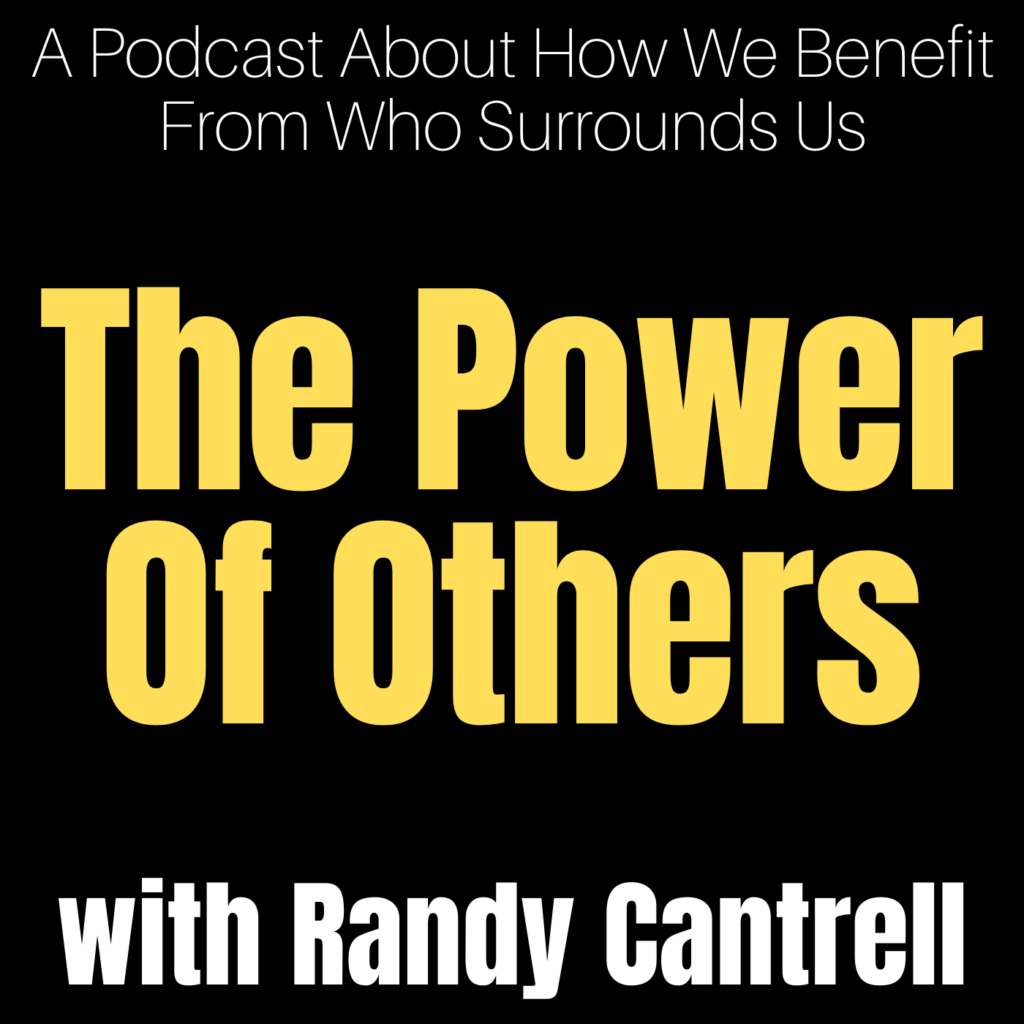
Happy Friday The 13th: Good-Bye! (352) Read More »
